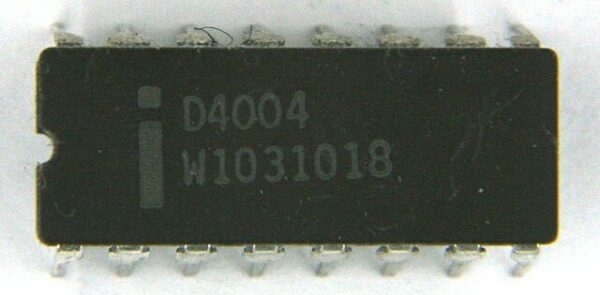On November 15, 1971, Intel Corporation released the 4004 microprocessor, marking a transformative moment in technology as the world’s first commercially available single-chip microprocessor. The Intel 4004 was a pioneering invention that condensed the functionality of an entire computing machine into a single integrated circuit, bringing forth a revolution that would shape modern computing and lead to the development of personal computers, mobile devices, and a vast array of digital technologies we rely on today.
Developed by Intel engineers Federico Faggin, Ted Hoff, and Stanley Mazor, the Intel 4004 chip was a feat of innovation for its time. Measuring just 1/8 inch by 1/16 inch, it contained 2,300 transistors—minuscule by today’s standards but groundbreaking in 1971. The 4004 operated at a clock speed of 740 kHz and could perform approximately 92,000 instructions per second, a significant advancement in computing capability then. Though its processing power might seem modest today, the 4004’s significance lay not in its speed but in its ability to integrate the functions of a central processing unit (CPU) on a single silicon chip, which had previously required large, multi-component systems.
The Intel 4004 was initially developed for Busicom, a Japanese calculator company that sought a more efficient design for its line of calculators. At the time, calculators required multiple chips to handle various tasks like arithmetic processing, memory storage, and control functions. Intel’s team proposed a more integrated approach, and the 4004 was born as a four-bit microprocessor, capable of executing complex instructions on a single chip. This partnership with Busicom set the stage for Intel to license the technology for wider applications beyond calculators, recognizing its potential for general-purpose computing.
The release of the 4004 opened up a new world of possibilities for miniaturization and cost reduction, helping make computing accessible to a broader range of industries. Its invention was a major milestone in the evolution of “Moore’s Law,” Intel co-founder Gordon Moore’s famous prediction that the number of transistors on a chip would double approximately every two years, leading to exponential growth in computing power. The 4004 chip laid the groundwork for this rapid progress, demonstrating that significant computational power could be packed into increasingly smaller spaces.
The microprocessor’s compact design and versatility quickly caught the attention of engineers and developers across various sectors. Soon, microprocessors were being used in embedded systems, industrial machines, and even household electronics, fundamentally altering how machines were controlled and operated. By combining functions that once required entire circuit boards into a single chip, the 4004 set the stage for the future development of personal computers. It served as the blueprint for Intel’s 8008 and 8080 microprocessors, which ultimately influenced the design of the first personal computers and gave rise to the modern computing industry.
The 4004’s release not only transformed technology but also sparked a change in how the world understood the potential of computers. It inspired a shift toward personal computing, allowing individuals and small businesses to harness the power of digital processing for their own purposes. This democratization of computing power opened doors to innovation and entrepreneurial ventures, influencing fields from science and engineering to education and the arts.
The impact of the Intel 4004 is still felt today, as microprocessors continue to evolve, becoming faster, more energy-efficient, and more integrated with daily life. From smartphones and tablets to vehicles and medical devices, the legacy of the 4004 lives on in every digital device that relies on microprocessing technology. The single-chip microprocessor concept that Intel pioneered remains foundational in the digital age, empowering advancements in artificial intelligence, cloud computing, and the Internet of Things (IoT).
The 4004 microprocessor’s release was more than a technological advancement; it was a catalyst for the modern digital world. It symbolized the beginning of an era where computing power could be harnessed on a previously unimaginable scale, accessible in small, compact forms that could fit into almost any device.






